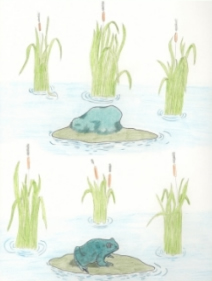
THE HYPOTHESIS OF THE ABIOGENESIS
|
The ancient Greek , in order to explain the origin of the frogs , said that the pond models itself spontaneously in order to assume the shape of these animals. In a similar way they believed that the eels were formed from the river and that bugs, snails, leeches and other small animals were born in a similar way. This type of birth was called "spontaneous generation". In the XVII century many naturalists continued to support the
hypothesis of the spontaneous generation. |
If you have Macromedia Flash Plug-in, you can see the animation: click |
| At that time the Church supported these ideas, in agreement with the verses of the Bible (Book of the Judges, 14) where it is said that the bees were born from the carcass of a lion. | |
| School site | Aristotle | Redi | Spallanzani | Metamorphosis | Microorganisms | "The tiny animals" | |
